Quite a few major cities around the world are served by more than one airport. When this happens, these airports are known as co-terminal airports, or co-terminals for short.
In technical aviation terms, “co-terminals” refers to a set of one or more airports that are interchangeable when issuing tickets; meanwhile, in the world of award travel and redeeming your miles for flights, co-terminals open up several possibilities for your award redemptions that may not be obvious at first glance.
This article will sum up everything you need to know about leveraging co-terminal airports to expand your range of possibilities when booking trips on points.
List of Co-Terminal Airports
First of all, here’s a list of co-terminal airports around the world with commercial air service. While the list isn’t exhaustive, it should cover the most significant co-terminal groupings worldwide.
People in the frequent flyer community often communicate in IATA airport codes, and you’ll notice that there are two types of IATA codes in this list: the individual airport codes for each airport, as well as metropolitan codes for a few major cities, which encompass all the airports in that city.
North America
-
Chicago (CHI): Midway (MDW), O’Hare (ORD)
-
Dallas: Dallas/Fort Worth (DFW), Love Field (DAL)
-
Houston: Bush Intercontinental (IAH), Hobby (HOU)
-
New York (NYC): JFK (JFK), LaGuardia (LGA), Newark (EWR)
-
South Florida: Fort Lauderdale (FLL), Miami (MIA), West Palm Beach (PBI)
-
Toronto (YTO): Billy Bishop (YTZ), Hamilton (YHM), Pearson (YYZ)
-
Washington, DC (WAS): Dulles (IAD), Reagan National (DCA)
South America
-
Buenos Aires (BUE): Aeroparque (AEP), Ezeiza (EZE)
-
Rio de Janeiro (RIO): Galeão (GIG), Santos Dumont (SDU)
-
São Paulo (SAO): Congonhas (CGH), Guarulhos (GRU), Viracopos/Campinas (VCP)
Europe
-
Istanbul: Istanbul (IST), Sabiha Gökçen (SAW)
-
London (LON): City (LCY), Gatwick (LGW), Heathrow (LHR), Luton (LTN), Stansted (STN)
-
Milan (MIL): Bergamo (BGY), Linate (LIN), Malpensa (MXP)
-
Moscow (MOW): Domodedovo (DME), Sheremetyevo (SVO), Vnukovo (VNO), Zhukovsky (ZIA)
-
Paris (PAR): Charles de Gaulle (CDG), Orly (ORY)
-
Stockholm (STO): Arlanda (ARN), Bromma (BMA)
Asia
-
Beijing (BJS): Capital (PEK), Daxing (PKX)
-
Jakarta (JKT): Soekarno-Hatta (CGK), Halim Perdanakusama (HLP)
-
Osaka (OSA): Itami (ITM), Kansai (KIX), Kobe (UKB)
-
Sapporo (SPK): New Chitose (CTS), Okadama (OKD)
-
Seoul (SEL): Gimpo (GMP), Incheon (ICN)
-
Shanghai: Hongqiao (SHA), Pudong (PVG)
-
Taipei: Songshan (TSA), Taoyuan (TPE)
-
Tokyo (TYO): Haneda (HND), Narita (NRT)
Note that this list is not simply a list of cities that have multiple airports. Specifically, the list excludes airports that are served only by low-cost or regional carriers, such as Rome’s Ciampino Airport (in addition to Fiumicino), Warsaw’s Modlin Airport (in addition to Chopin), Bangkok’s Don Mueang Airport (in addition to Suvarnabhumi), or Johannesburg’s Lanseria Airport (in addition to O.R. Tambo).
After all, the term “co-terminals” applies to different airports that are treated as the same point on a single valid ticket, so the point-to-point ticketing structure of low-cost carriers renders the concept meaningless. For example, you’re never going to book a single ticket with flights on both British Airways and Ryanair, or both Thai Airways and AirAsia.
Also, note that the list is somewhat fluid, as not all airlines employ the same treatment of certain groupings of co-terminals.
For example, Alaska Airlines considers additional co-terminal groupings as valid – you can see both a “Bay Area” co-terminal set (consisting of Oakland, San Francisco, and San Jose) as well as a “Los Angeles” co-terminal set (consisting of LAX, Ontario, Burbank, Long Beach, and Santa Ana) when conducting searches on the Alaska website.
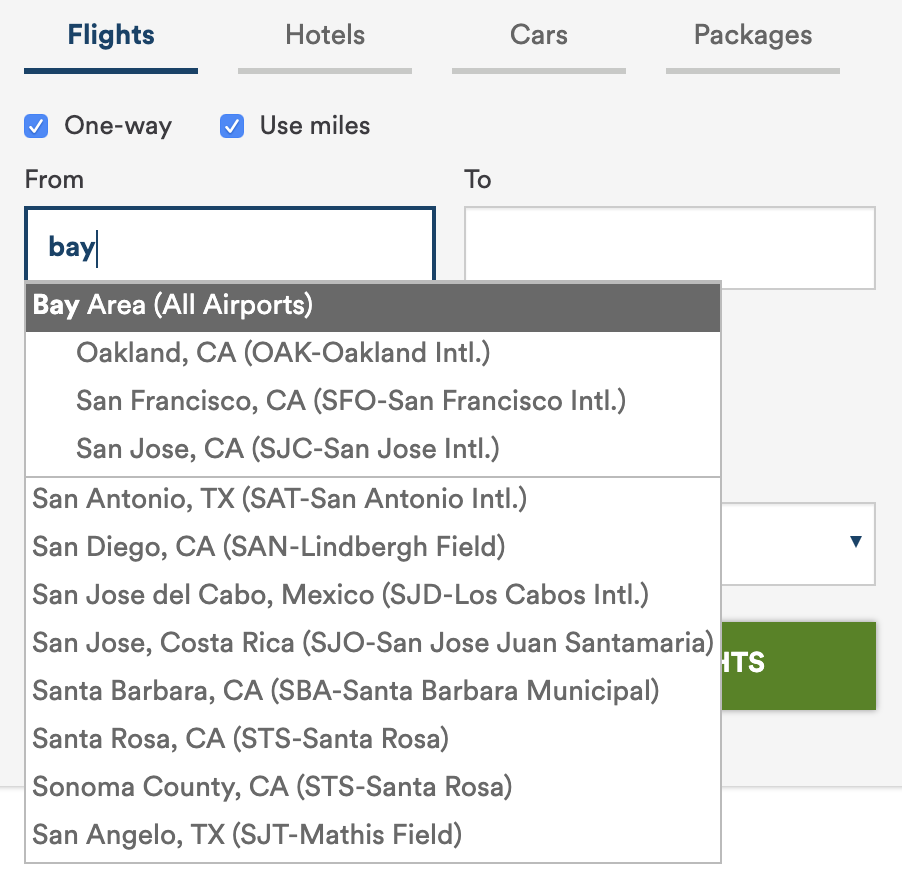
Since different airlines take different views of whether certain city groupings count as co-terminals, there’ll never be a comprehensive listing of co-terminal airports. However, the above list should encompass the most meaningful ones that you’re likely to encounter when booking your travels.
Using Co-Terminals to Your Advantage
The key characteristic of co-terminals is that they are treated as the same point when booked on a single ticket. What does this mean, exactly?
Well, normally when you fly into one airport and out of another on the same itinerary, that’s considered an open-jaw. But if the two airports involved are co-terminals, it does not count as an open-jaw and is simply treated as either a layover (if it’s under 24 hours in duration) or a stopover (if it’s over 24 hours).
Let’s look at a few ways that you might use this to your advantage when booking award travel.
Co-Terminals at a Destination or Stopover
One of the best ways to leverage co-terminals is by flying to/from an airport that’s much closer to the city centre on a regional flight, before or after a long-haul flight out of the city’s main international airport.
For example, let’s say you were trying to book an Aeroplan award with a stopover in London on the way to Asia.
Once you’ve located space on your transatlantic flight over to Zurich, the next step is to add on a flight between Zurich and London at the end. Flying into London Heathrow might seem like the most natural choice, but why not pick one of Swiss’s many flights between Zurich and London City Airport instead?
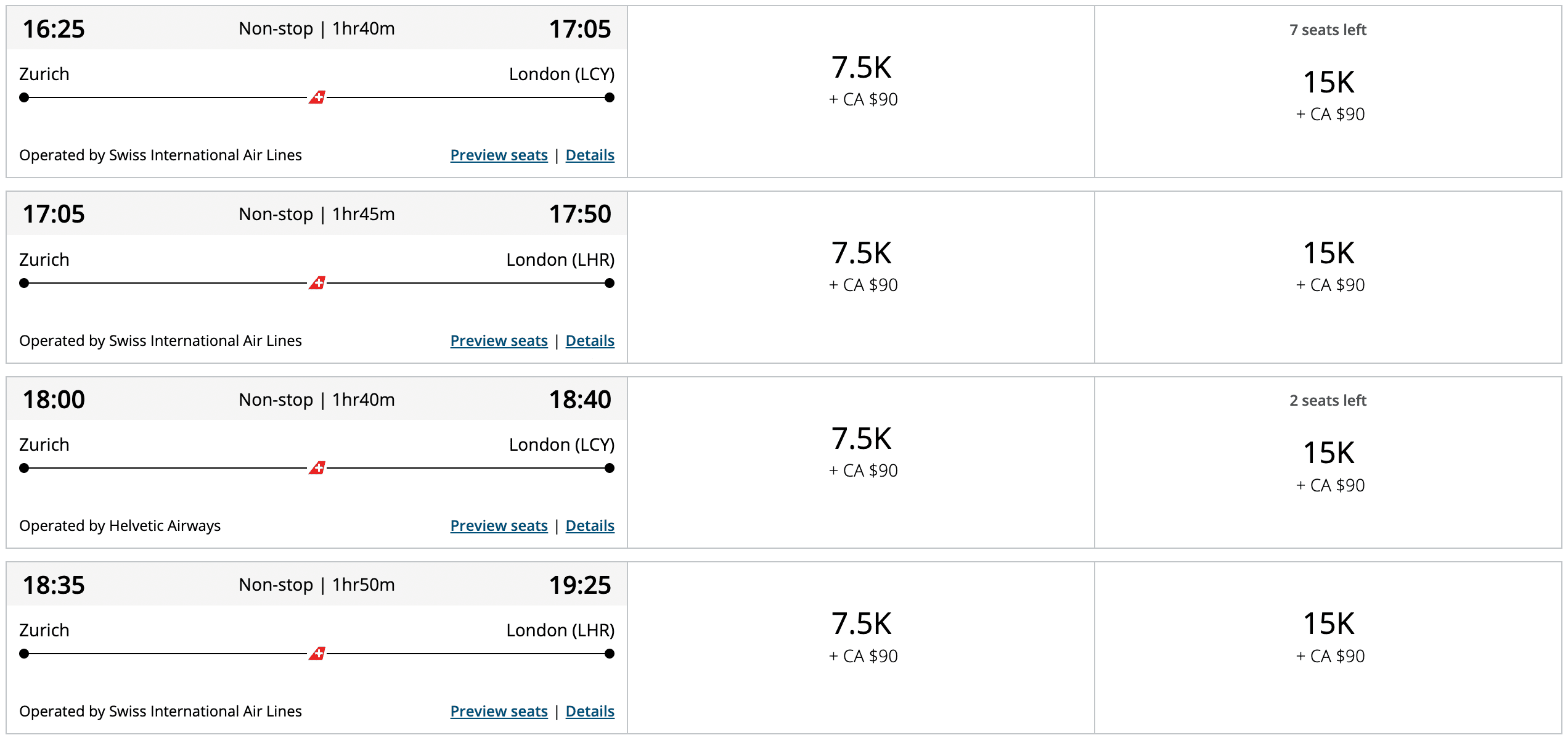
London City is a much smaller airport than Heathrow, and you can make your way between the jet bridge and the departures hall in half an hour. Moreover, it’s a short ride on the Docklands Light Railway into town, and you also get some great views of the City of London upon takeoff or landing.
Because all of London’s airports are considered co-terminals, you can fly into London City and out of London Heathrow on your long-haul departure to Asia, and it’ll all count as a valid stopover in London instead of an open-jaw.
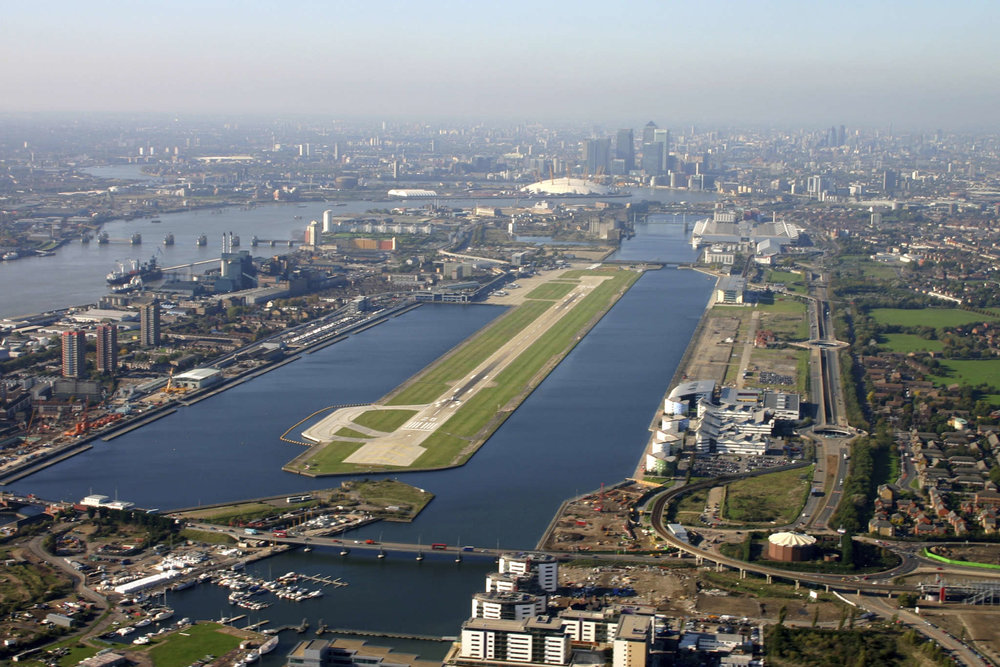
Another instance when the power of co-terminals might come in handy is when your flight bookings are dictated by limited flight or award availability.
For example, if you’re looking to fly from Lisbon to Paris, you may notice that TAP Air Portugal only flies to Paris Orly, and not the main airport, Paris Charles de Gaulle. If they weren’t considered co-terminals, then you’d be forced to continue the journey out of Paris Orly – a tall order at an airport dominated by low-cost carriers.
Since Orly and Charles de Gaulle are in fact co-terminals, you’d have no problem flying into Orly and out of Charles de Gaulle on the same ticket.
The same lesson applies when you’re working with limited award availability. A great example of this comes with flights and or from Japan.
No award space into and out of the same Tokyo airport? No problem. Narita and Haneda are co-terminals, so you’re able to fly into one and out of the other on the same ticket.
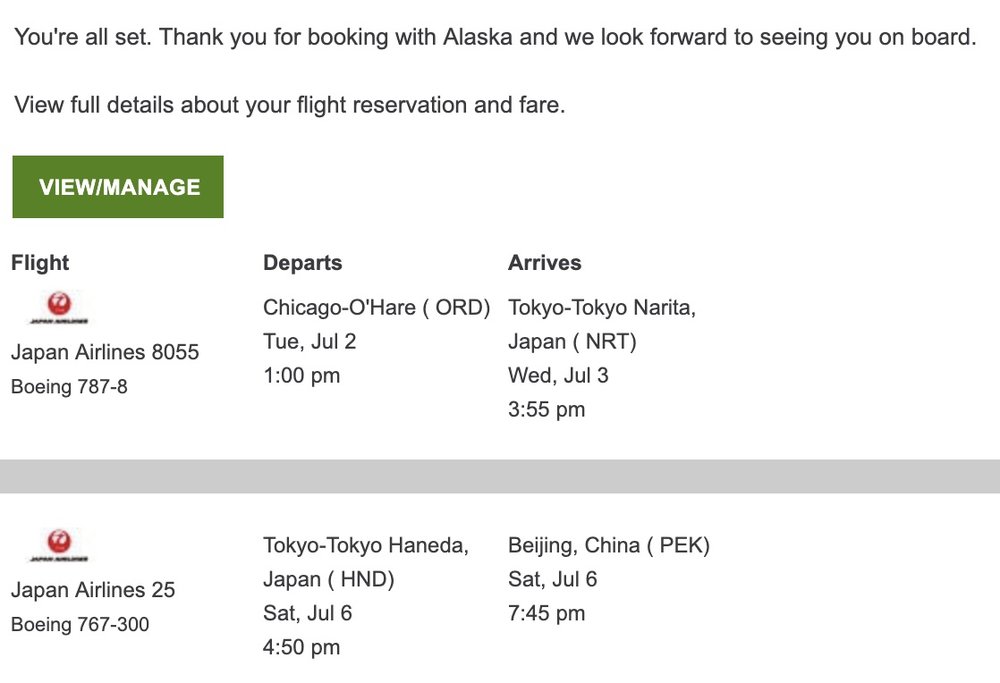
Whenever you’re running into limited award space when flying to/from major cities, ask yourself if there are any co-terminal airports you could use.
If you’re struggling to find space between Tokyo and Taipei, with both HND–TPE and NRT–TPE searches turning up empty, try finding a flight to Taipei’s other airport (TSA). You may be delighted to find a flight from Tokyo Haneda to Taipei Songshan, which would then solve your problem.
Co-Terminals on a Layover or Connection
Co-terminals can also be very useful to help you optimize a long layover.
A great example of this is in Seoul, which is served by co-terminal airports. You can fly into Seoul Gimpo Airport, which is located close to the city, and then enjoy a layover of up to 24 hours.
When it comes time to depart, you can make your way to Seoul Incheon Airport, after having enjoyed some time in the city on your layover.
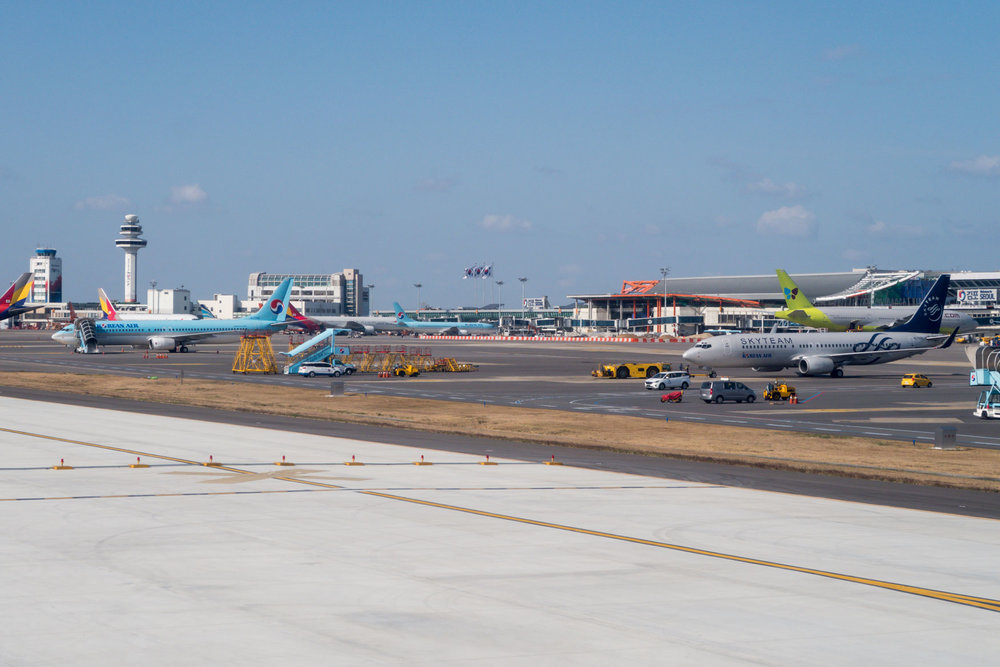
You could apply the same principle to other co-terminal groupings in which one airport is significantly closer to town than the other(s), such as London City (vs. Heathrow or Gatwick), Tokyo Haneda (vs. Narita), Toronto Billy Bishop (vs. Pearson), Washington Reagan National (vs. Dulles), or Buenos Aires Aeroparque (vs. Ezeiza). Flying into these smaller regional airports instead of the larger international ones whenever possible can give you some precious additional time on the ground at your chosen long layover point.
Meanwhile, if you’re merely connecting somewhere instead of spending a long layover, you might also encounter the need to use co-terminal airports.
The most prominent example of this is using New York JFK on Aeroplan awards: several Star Alliance long-haul flights depart from JFK, but if you’re connecting from many airports in Canada, you often have to fly into either Newark or LaGuardia and make the trip across town on your own.
Keep in mind that connections between co-terminals require a Minimum Connection Time (MCT) that’s different from the standard single-airport MCTs that you can look up on ExpertFlyer.
It’s usually wise to build in at least four hours for crosstown journeys between airports – anything less and you’re at serious risk of missing your onward flight in case of heavy traffic or some other disruption to your journey.
Co-Terminals at the Origin
Lastly, you can also have co-terminals at the origin of your trip, allowing you to embark on the trip from one airport and return to another.
Toronto is a great example of this, as the city is served by both Toronto Pearson (YYZ) and Toronto Billy Bishop (YTZ).
On a single booking, you might find direct flights from Toronto Pearson (YYZ) to your destination. Coming back, you might only be able to find award space into Montreal instead of Toronto, and then choose to fly from Montreal to Toronto Billy Bishop (YTZ) to get back home.
Even though you’re technically using two different airports at the beginning and end of your trip, since they’re co-terminals, you won’t run into any issues.

Searching and Booking Co-Terminals
When searching for award flights between cities that have co-terminals, be sure to use the metropolitan code instead of the specific airport code whenever possible, in order to cover all of the airports within a city in your search.
Most airline loyalty programs have included co-terminals automatically in the search. For example, when you input TYO as the destination instead of Tokyo Narita (NRT) or Tokyo Haneda (HND), you can hunt down Japan Airlines’s flights into both Haneda and Narita airports in one fell swoop.
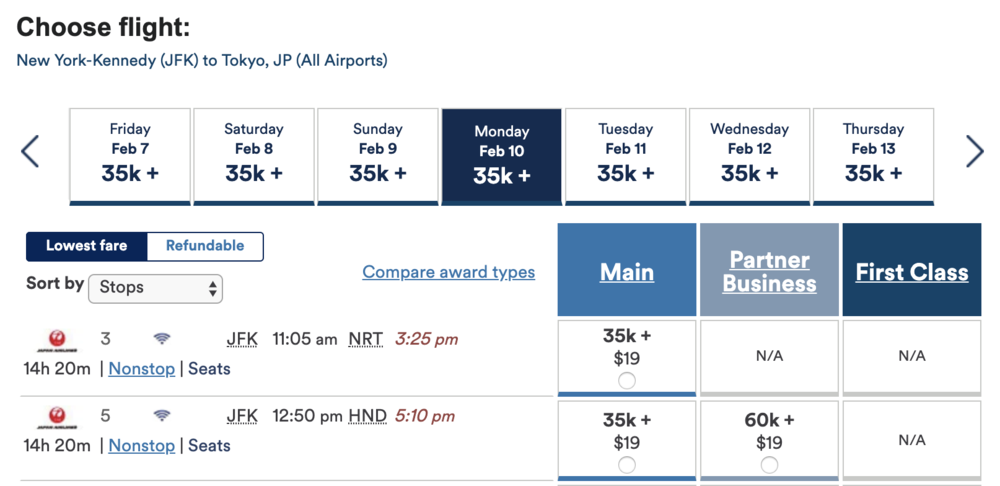
Similarly, the British Airways Executive Club website works very well with co-terminals. Redeeming Avios on short-haul European flights is often great value, and a search for LON as the origin or destination allows you to capture all of British Airways’s services out of Heathrow, Gatwick, or City Airport.
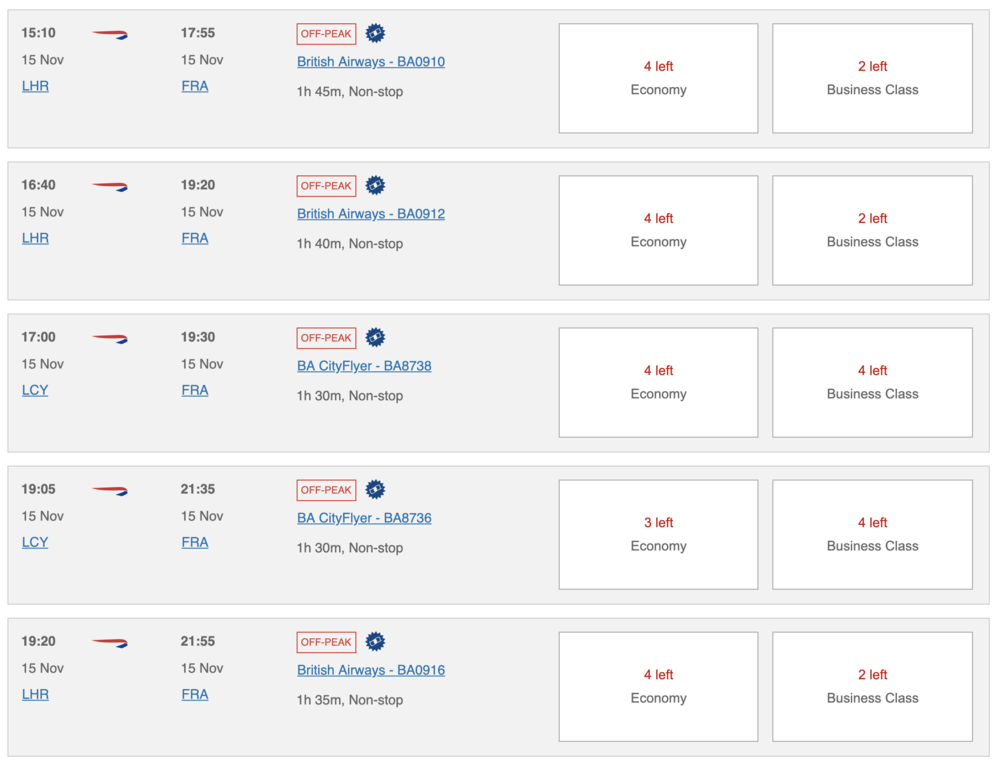
When searching for Star Alliance awards, Aeroplan and ExpertFlyer also allow you to search for co-terminals. A search between Chicago (ORD) and Tokyo (TYO), for example, captures all of United and ANA’s daily direct flights between Chicago and Haneda/Narita.
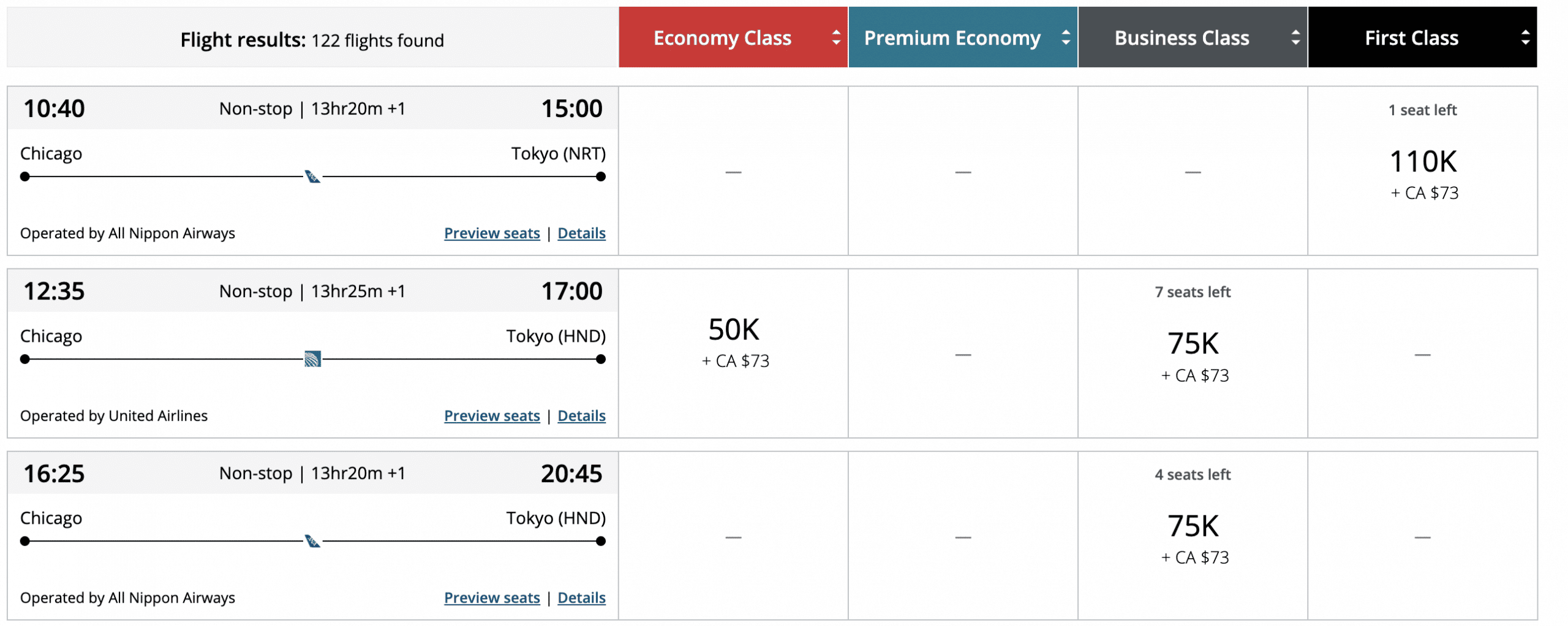
Lastly, one more nuance about co-terminals is that you might get involuntarily re-routed to a different co-terminal airport in the event of flight delays or cancellations.
For example, if you’re scheduled to fly into a particular airport, say, Moscow Sheremetyevo (SVO), you could be involuntarily rerouted to Moscow Domodedovo (DME) instead. If this happens, you’re on the hook for getting across the city, so be sure to suggest alternative flights if the airline’s rerouting doesn’t jive with your plans.
Conclusion
Co-terminal airports open up a wider range of possibilities when you’re redeeming miles for travel. By taking advantage of the fact that co-terminals are treated as a single point when booked on the same itinerary, you can fly into smaller centrally-located airports for a smoother journey, maximize your long layovers, and get out of tight spots when award space is limited.
Co-terminals are yet another useful tool to keep around as you seek to maximize your flight redemptions. If you’re stuck with a particular segment on a complex booking, be sure to consider all of the airports at your disposal, as you may be pleasantly surprised.


















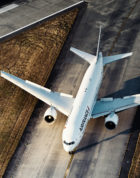

are SNA and LAX considered co terminals on Aeroplan?
p.s. Aeroplan still let me do 16 segments when using ICN/GMP as co-terminals. The full trip was:
YHZ-YUL-PEK(stop)-GMP/ICN-TPE-SZX-KUL(dest)-SIN-BKK-CAI-ATH-IST-OTP(stop)-WAW-CPH-BOS-YHZ
It took two hours on the phone to book it. They had to manually calculate the taxes and fees due to the "invalid" routing according to their automated system.
Aeroplan doesn’t consider ICN/GMP co-terminals. However on a recent mini-RTW, I convinced them to treat it as a co-terminal to avoid having it count as an open jaw for PEK-GMP/ICN-TPE.
Don’t they? I too had booked a GMP/ICN long layover (as mentioned in the article) and it was done very easily with no hesitation at all.
The agent used the term sister cities, not co-termials, and referred to an internal list with airports like JFK/EWR/LGA. When I said GMP/ICN should be the same as HND/NRT, she told me the list didn’t have any cities in Asia at all. Maybe they have a separate list for Asia that the agent didn’t know about. I did the booking in January, before Air China added YQ for Aeroplan rewards. Taxes & fees were $362 per ticket, plus the $30 Aeroplan phone booking fee.
Bangkok Airports. Suvarnabhumi International Airport (BKK)and Don Mueang International Airport (DMK)
Never mind.
Thanks for this article. You have provided food for thought for an upcoming trip next year.